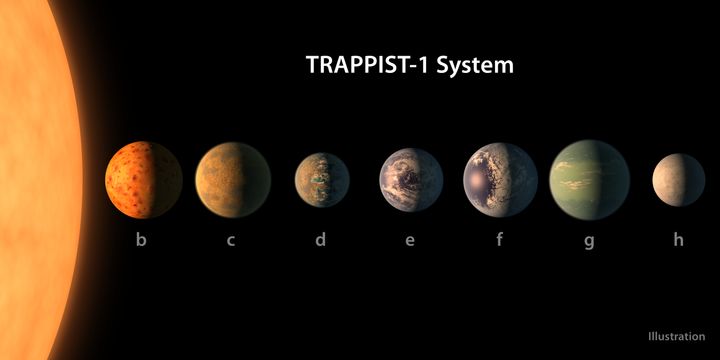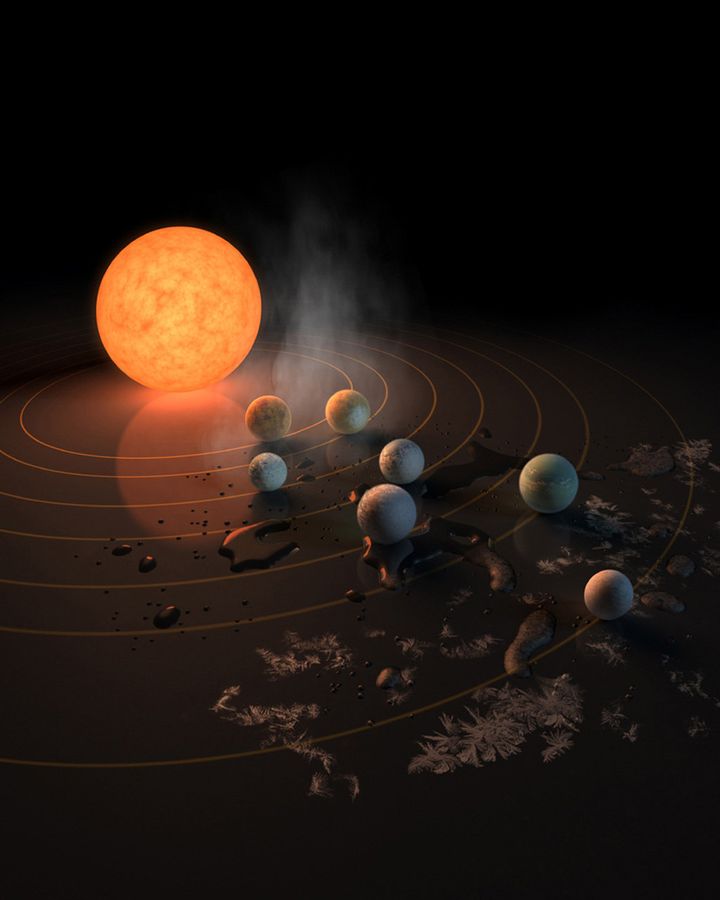NASA’s Spitzer Space Telescope has discovered something rather special: Not one, but seven Earth-like planets and they’re all orbiting a single star.
What makes the discovery all the more astonishing is that not only is the system just 40 light years away from Earth, but that three of the planets discovered are within what we would call the ‘habitable zone’.

Speaking about the discovery Thomas Zurbuchen, associate administrator of the agency’s Science Mission Directorate in Washington said: “Answering the question ‘are we alone’ is a top science priority and finding so many planets like these for the first time in the habitable zone is a remarkable step forward toward that goal.”
Found in the constellation Aquarius the TRAPPIST-1 is, relatively speaking, incredibly close to our own solar system at a distance of just 40 light years (235 trillion miles).

The team, led by Michaël Gillon of the University of Liège in Belgium, announced in May 2016 that they had found three planets within the system.
Then using the Spitzer Space Telescope along with the European Southern Observatory’s Very Large Telescope the team were able to bring the total number of planets discovered around the star to seven.
Based on their densities the team believes that all seven planets are rocky in nature. Further observations of these planets will then help us determine if they liquid water on their surfaces.
What makes TRAPPIST-1 special is its star. It is what is known as an ultra-cool dwarf which means that planets can be extremely close and yet still feature liquid water on their surface. In fact all seven of them are closer to their star than Mercury is to our own.
In addition they’re incredibly close to one another which means that you could be standing on one planet, look up into the sky and actually make out the cloud formations on a neighbouring planet.

”This is the most exciting result I have seen in the 14 years of Spitzer operations,” said Sean Carey, manager of NASA’s Spitzer Science Center at Caltech/IPAC in Pasadena, California.
“Spitzer will follow up in the fall to further refine our understanding of these planets so that the James Webb Space Telescope can follow up. More observations of the system are sure to reveal more secrets.”
